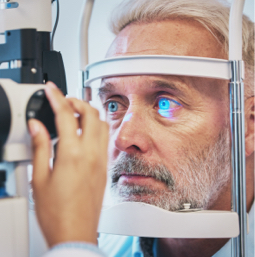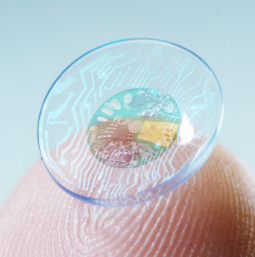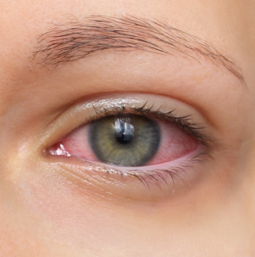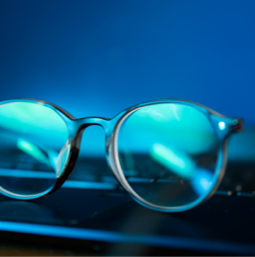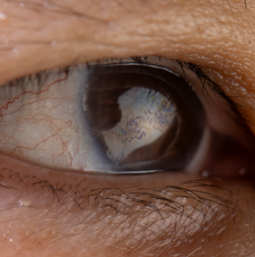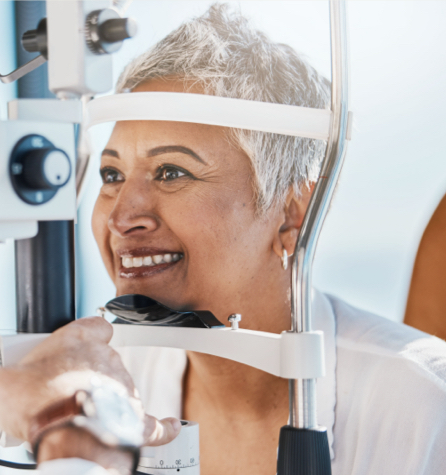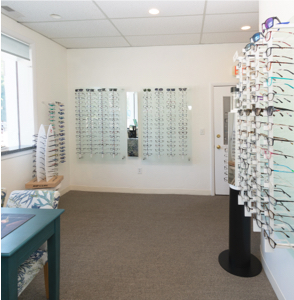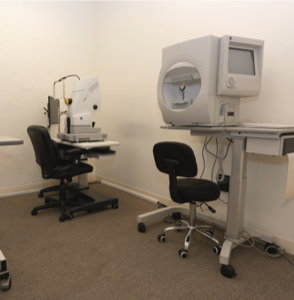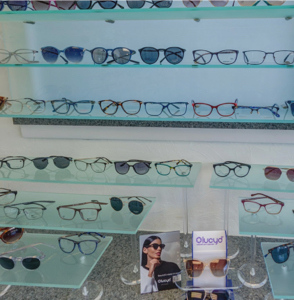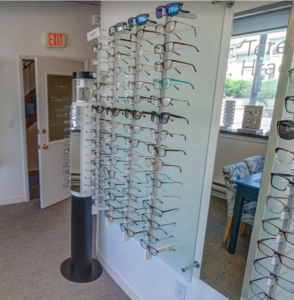Blurry vision can be frustrating, irritating, and concerning—especially when it progressively worsens. Plenty of common eye conditions can lead to constant blurry vision, but there are 3 common culprits:
- Myopia causes blurry vision at a distance
- Hyperopia causes blurry vision up close
- Presbyopia is an age-related condition that also causes blurry vision up close
Each of these conditions have some common treatments. However, there are also distinct treatments for myopia, known as myopia control, that you should be aware of if your child develops myopia.
What Is Myopia?
Myopia, commonly known as nearsightedness, is a condition where distant objects appear blurry while close objects can still be seen clearly. It occurs when the eye elongates, or the cornea becomes too curved, causing light rays to focus in front of the retina. This leads to:
- Blurry vision
- Headaches
- Eye strain
- A higher risk of eye conditions later in life
People with myopia often struggle with activities like reading road signs or seeing a movie screen clearly.
Myopia rates are rising globally and it’s estimated that rates of myopia have nearly doubled in the USA in the last 3 decades. Being aware of what myopia is and how it can affect your child can be important for supporting their future sight and eye health.
How to Treat Myopia
While there is no natural cure for myopia, the condition can be effectively managed to slow how the eye elongates over time. This approach, called myopia control, can reduce how far a child’s myopia progresses over the years, leading to a reduced need for frequent prescription changes and a lower risk of complications caused by high myopia.
Once the eye elongates, this process can’t be reversed. However, the condition can be effectively managed in adults through eyeglasses, contact lenses, and laser eye surgery in some situations.
What Is Hyperopia?
Hyperopia, or farsightedness, is kind of like the opposite of myopia—it causes objects to be blurry when near the eye while distant objects remain clear. This occurs when the eye’s shape causes light to focus behind the retina rather than on it due to a shorter eyeball or flatter cornea.
If you have hyperopia, you may experience the following issues:
- Difficulty reading books or using phones
- Eye strain during activities that require close-up vision
- Headaches after prolonged periods of reading or focusing on nearby objects
If you find yourself squinting or feeling fatigued when trying to read or do detailed work, it might be time to get your eyes checked.
How to Treat Hyperopia
The good news is that hyperopia is generally manageable. Treatments typically include corrective lenses—either glasses or contact lenses—designed to help focus light directly on the retina.
In certain cases, laser surgery might be an option too. So don’t hesitate to reach out to an eye care professional if you think you might be dealing with hyperopia—you may have several options for seeing clearly.
What Is Presbyopia?
Presbyopia is a refractive error that develops when the clear lens inside your eye begins to lose its flexibility. This is an age-related condition that usually develops over the age of 40.
When you’re younger, this lens can easily change shape to focus on nearby objects. As you age, this ability degrades, and it becomes harder and harder to focus on nearby objects. Presbyopia can lead to the following symptoms:
- Difficulty reading small print
- Needing to hold reading materials at arm’s length
- Eye strain or headaches after close work
- Blurry vision at normal reading distance
Fortunately, this is a common condition, and we can help you manage the effects of presbyopia with specialty eye drops and prescription lenses.
How to Treat Presbyopia
Treatment for presbyopia typically aims to correct your nearby vision without compromising your distance vision. While some people simply carry 2 pairs of glasses—1 for nearby vision and 1 for distance—this isn’t always the most convenient choice.
Instead, multifocal lenses are often recommended. These incorporate several viewing zones into a single lens, each with a unique prescription designed for different levels of correction. These come in both eyeglasses and contact lenses, giving you options for seeing clearly.
We also offer specialty daily eye drops that can correct presbyopia by reducing the size of your pupil. During your next appointment, we can help you decide if these eye drops are right for you.
What’s Causing Your Blurry Vision?
At Rock optiX, we are ready to help you see clearly again. We can perform a comprehensive eye exam to determine whether myopia, hyperopia, presbyopia, or another condition is causing your vision problems and recommend a corrective solution based on your lifestyle and eye health.
Don’t let blurry vision go unaddressed—we can help. Book your appointment with our team today!



